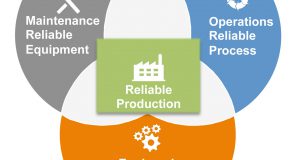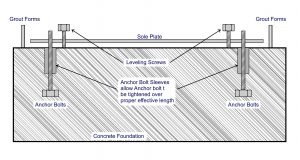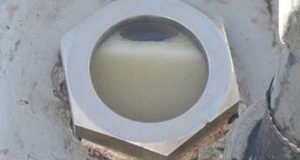RMM Beliefs: Part I
CHRISTER IDHAMMAR
IDCON, INC. FOUNDER AND RECOGNIZED RM GURU
If I were to join an organization, be it political, religious, or of another special interest, I would like to know what its mission is and what beliefs this mission is based on. If I agree with the organization’s beliefs, I would very likely join that organization and become a supportive and active member.
To become a good Reliability and Maintenance Manager (RMM) you need to develop, document, and communicate well-defined work processes. This is the easy part. Getting enthusiastic executors of these processes is the biggest challenge. To do this, your leadership will need to be strong enough to make followers out of your team.
START WITH SHARING
Some years ago, I was involved in an ambitious RM improvement project in a big plant in Alabama. We agreed on the scope of work with the client, including:
• Develop a mission and vision
• Scope of work and charter
• Implementation plan
• Implementation team
• Roles and responsibilities in a RACI chart
• Expected results
• How to measure progress and results
• …and more
After defining the scope, we started with a series of information sessions to operations and maintenance employees. To my surprise, the RMM (who had been in this position for more than five years) started each information session by presenting who he was. The majority of the maintenance employees did not even know who he was.
Most of the presentations included what was to be done, expected results, etc. Not much was shared about why this project was important.
After we evaluated how the information sessions were received, it was clear that starting this project was met without much enthusiasm. The employees had been through many similar improvement initiatives before, and most of the projects had ended before completion because of a new RMM starting another project.
I discussed this with the Implementation team and suggested that we follow up with a presentation based on common beliefs as a basis for the project. IDCON, INC. is based on 15 beliefs that all employees must learn; we offered to review these beliefs and adapt them to the RMM’s beliefs. In the end, only some wording was changed to match the company’s mission.
After the next round of presentations, we saw a notable improvement in acceptance and commitment to contribute to success. The RMM was also now in a position to gain more followers because his organization agreed with his beliefs. They now knew what he stood for and they agreed because the beliefs were common sense.
The First Belief
In this column, I’ll explain the first belief (we’ll cover others in future columns.) Belief #1 is:
“Cost reduction does not generate improved reliability. Improved reliability results in lower costs.”
Reliability performance is measured here as the result of (% Quality) x (% Time) x (% Speed), or Overall Production Efficiency (OPE). To sustainably reduce cost, you need to focus on what drives cost, not just cost alone. Improved production reliability improves safety and drives down costs.
A focus on cost reduction often leads to short-term gains and long-term loss. For instance, just because you cut the number of employees does not mean that the work they needed to do will vanish, and it certainly does not mean that reliability will improve. Even if your production lines are not sold out, the biggest improvement saving potential lies in increased production reliability (it shortens the time from raw material to finished product). Improved reliability also improves safety and energy consumption.
In summary, this belief states that this is a reliability improvement initiative—not a shortsighted cost-cutting initiative. In this case, the OPE for the last 12 months was 86 percent. A good OPE would be 92 percent, and a great OPE would be 94 percent.
As an example, we showed that a 1 percent increase in OPE had an annual value of US$1.2 million, so the potential was six times that, or US$7.2 million, if they reached an OPE of 92 percent. This would be followed by improved safety and lower manufacturing cost per ton.
This belief must be agreed upon with plant and operations managers, and the plant manager should be supporting this improvement initiative consistently and long term.
Most successful implementations took a minimum of two years, and a maximum seven years, to reach great results, depending on how good RM performance was at the start. Results included improved production throughput (OPE) by 2-7 percent, followed by improved safety and lower costs.
The first one to two years had the highest cost for implementation (0.5-2.0 percent of the maintenance budget), gradually costing less and less per year after that. Often, the results exceeded the implementation cost through improved OPE and lower maintenance costs in the first one to two years.
Check this section in the next issue for Part 2 in our series.




